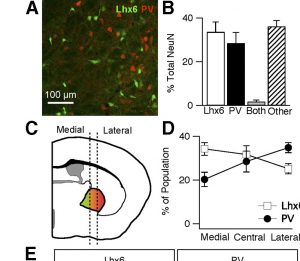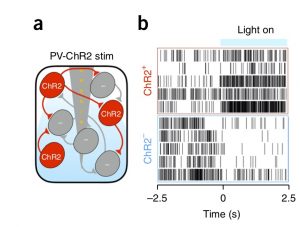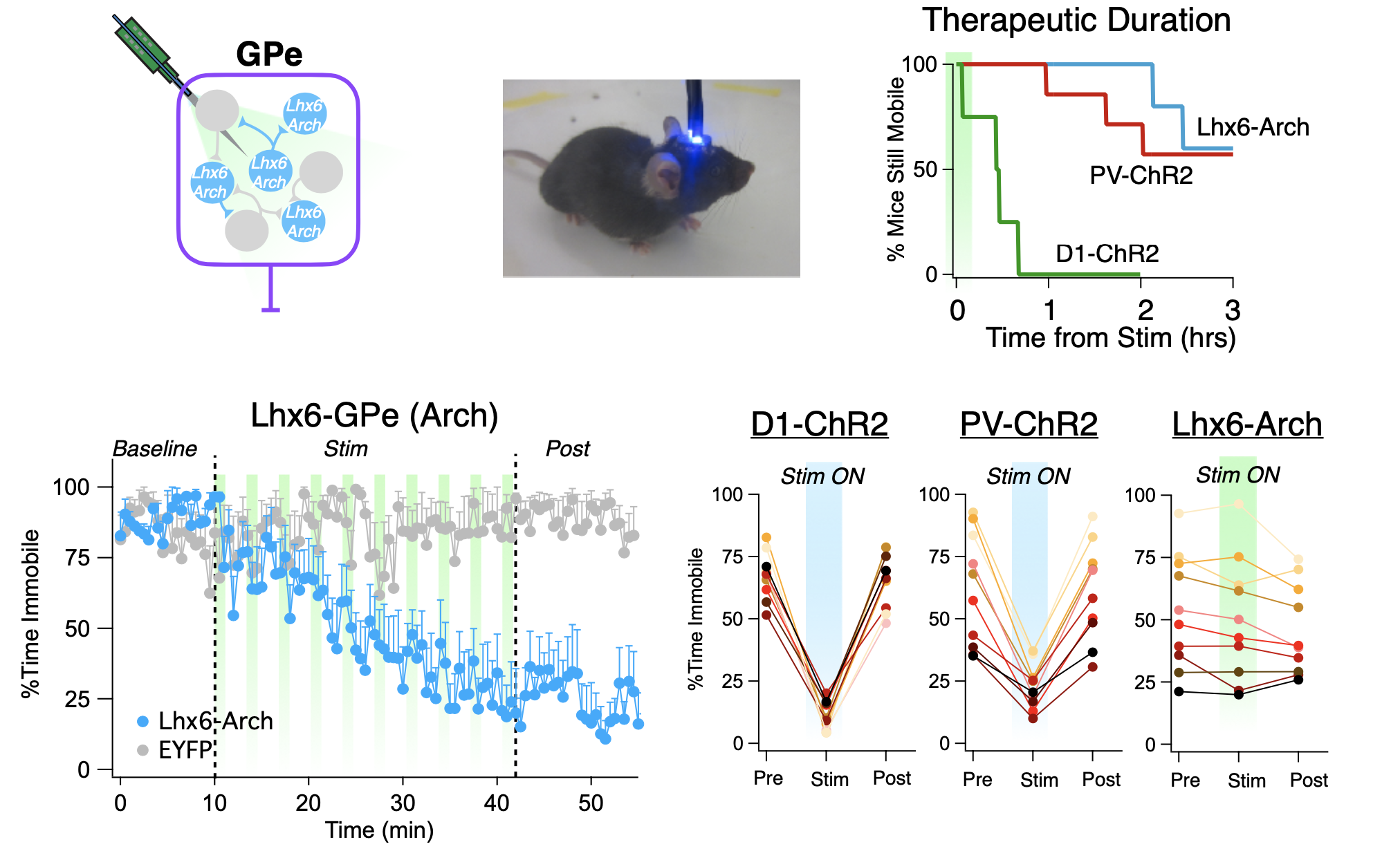Projects
We study neural circuits in the basal ganglia, a multifunctional brain region that plays a role in the regulation of movement, learning, motivation, and reward. Ongoing projects include:
1. Study of Neural Circuits in the External Segment of the Globus Pallidus (GPe)
We use transgenic mouse lines to subdivide neuronal populations in the GPe (Mastro et al., 2014). In dopamine-depleted mice, optogenetic strategies that selectively elevate the firing of PV-GPe neurons above that of Lhx6-GPe neurons induce long-lasting recovery of movement that persists hours beyond stimulation (Mastro et al., 2017). Current projects seek to elucidate the anatomical and functional pathways through which GPe interventions mediate their long-lasting therapeutic effects. Studies include in vivo recordings from different nodes throughout the circuit, slice electrophysiology studies of synaptic plasticity, and anatomical studies to delineate cell-specific pathways (Spix et al., 2020).


2. Study of Non-Motor Characteristics of the GPe
Optogenetic stimulation of Adora2a receptor-expressing spiny projection neurons (A2A-SPNs) in the striatum drives locomotor suppression and transient punishment, results attributed to activation of the indirect pathway. The sole long-range projection target of A2A-SPNs is the external globus pallidus (GPe). Unexpectedly, we found that inhibition of the GPe drove transient punishment but not suppression of movement. Within the striatum, A2A-SPNs inhibit other SPNs through a short-range inhibitory collateral network, and we found that optogenetic stimuli that drove motor suppression shared a common mechanism of recruiting this inhibitory collateral network. Our results suggest that the indirect pathway plays a more prominent role in transient punishment than in motor control and challenge the assumption that the activity of A2A-SPNs is synonymous with indirect pathway activity (Isett et al., 2023).

3. Study of Persistent Motor Rescue in Parkinsonian Mouse Model
Identification of distinct cell types in the basal ganglia has been critical to our understanding of basal ganglia function and the treatment of neurological disorders. The external globus pallidus (GPe) is a key contributor to motor-suppressing pathways in the basal ganglia, yet its neuronal heterogeneity has remained an untapped resource for therapeutic interventions. Utilizing optogenetic interventions that dissociate the activity of two neuronal populations in the GPe, we elevated the activity of parvalbumin (PV)-expressing GPe neurons over that of Lim homeobox 6 (Lhx6)-expressing GPe neurons, restoring movement in dopamine-depleted mice and attenuating the pathological activity of basal ganglia output neurons for hours beyond stimulation. These results establish the utility of cell-specific interventions in the GPe to target functionally distinct pathways, with the potential to induce long-lasting recovery of movement despite the continued absence of dopamine (Mastro et al., 2017).

4. Circuit Basis of Skilled Motor Learning
The learning and mastery of motor skills require the coordination of many areas across the brain including the basal ganglia, cortex, thalamus, and cerebellum. Through a collaboration with Steve Chase in Biomedical Engineering, we have developed a running wheel/paw tracking system to study the kinematics of how motor skills are learned and mastered over time. Using optogenetics, fiber photometry, and disease models, we will elucidate large-scale brain circuits required to learn and maintain motor performance (Nguyen et al., 2022).

